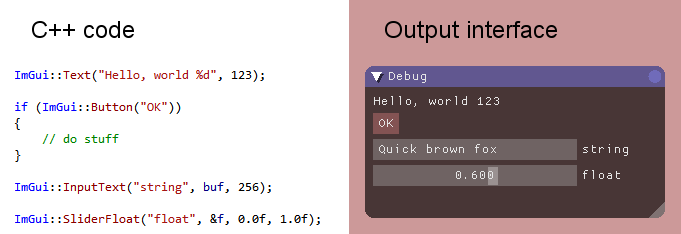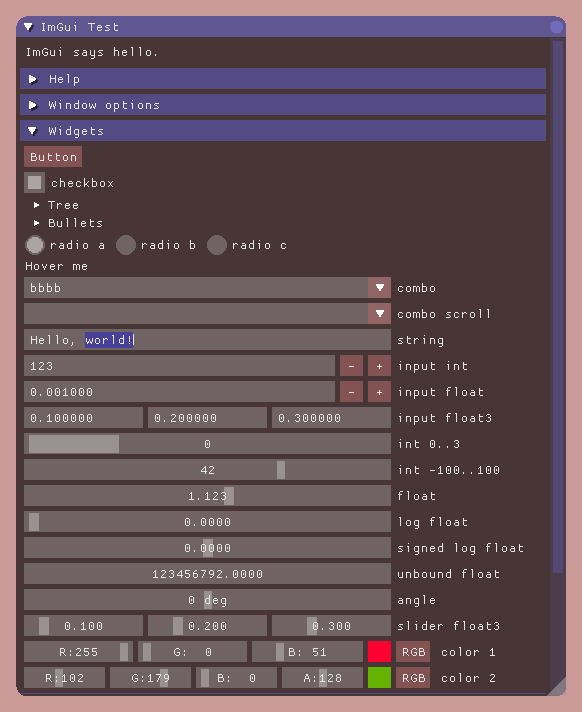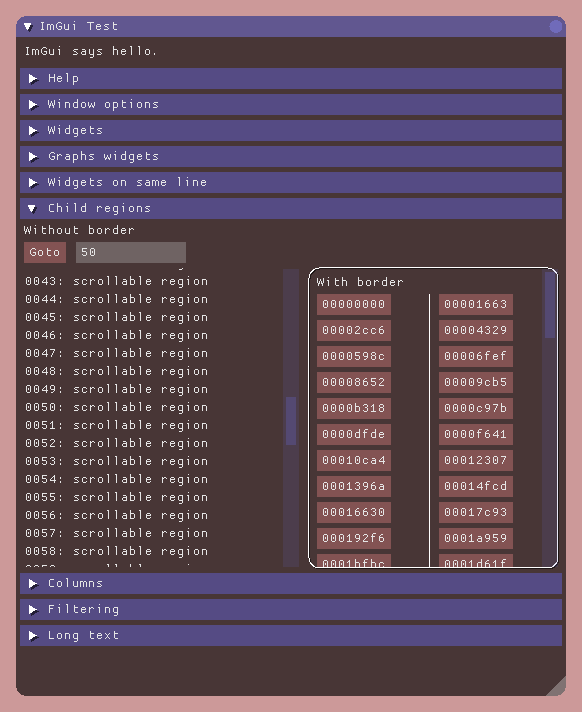ImGui
ImGui is a bloat-free graphical user interface library for C++. It is portable, renderer agnostic and carries minimal amount of dependencies (only 3 files are needed). It is based on an "immediate" graphical user interface paradigm which allows you to build simple user interfaces with ease.
ImGui is designed to allow programmers to create "content creation" or "debug" tools (as opposed to tools for the average end-user). It favors simplicity and thus lacks certain features normally found in more high-level libraries, such as string localisation.
After ImGui is setup in your application, you can use it like in this example:
ImGui outputs vertex buffers and simple command-lists that you can render in your application. Because it doesn't know or touch graphics state directly, you can call ImGui commands anywhere in your code (e.g. in the middle of a running algorithm, or in the middle of your own rendering process). Refer to the sample applications in the examples/ folder for instructions on how to integrate ImGui with your existing codebase.
Gallery
References
The Immediate Mode GUI paradigm may at first appear unusual to some users. This is mainly because "Retained Mode" GUIs have been so widespread and predominant. The following links can give you a better understanding about how Immediate Mode GUIs works.
- Johannes 'johno' Norneby's article.
- A presentation by Rickard Gustafsson and Johannes Algelind.
- Jari Komppa's tutorial on building an ImGui library.
- Casey Muratori's original video that popularized the concept.
Credits
Developed by Omar Cornut. The library was developed with the support of Media Molecule and first used internally on the game Tearaway.
Embeds proggy_clean font by Tristan Grimmer (also MIT license).
Inspiration, feedback, and testing: Casey Muratori, Atman Binstock, Mikko Mononen, Emmanuel Briney, Stefan Kamoda, Matt Willis. Thanks!
License
ImGui is licensed under the MIT License, see LICENSE for more information.




